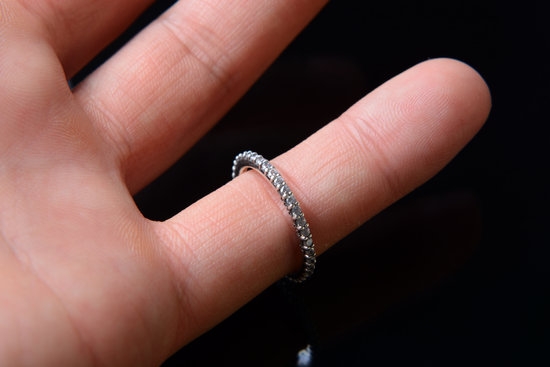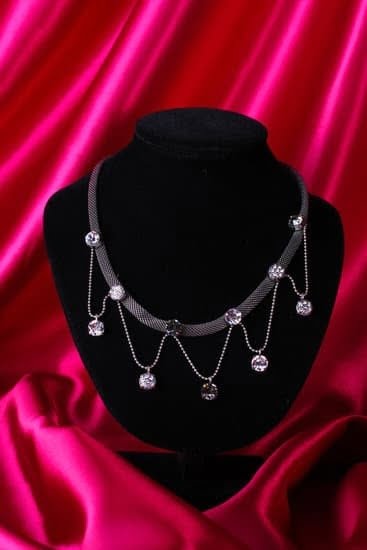Grey tagua beads or nuts are becoming increasingly popular in the world of jewelry making due to their unique beauty and versatility. Also known as vegetable ivory, grey tagua beads offer an ethical and sustainable alternative to traditional ivory products. In this article, we will delve into the history and origins of tagua nuts, the process of harvesting and crafting grey tagua beads, as well as the benefits of using them in jewelry making.
Tagua nuts come from the ivory-nut palm tree native to South America, particularly Ecuador. These nuts have been used for centuries by indigenous communities for various purposes, including jewelry making. Harvesting tagua nuts does not harm the tree itself, making it a truly renewable and eco-friendly resource. The process of turning these nuts into beautiful grey tagua beads involves drying, cutting, dyeing, and polishing them to perfection.
When it comes to creating jewelry pieces with grey tagua beads, the possibilities are endless. From earrings and necklaces to bracelets and rings, these beads can add a touch of natural elegance to any accessory. Not only are they aesthetically pleasing, but they also make a statement by promoting sustainable fashion practices. Stay tuned as we explore different design inspirations and provide tips on how to work with grey tagua beads for your next project.
History and Origins of Tagua Nuts
Tagua nuts, also known as vegetable ivory, are the seeds of certain palm trees native to the tropical rainforests of South America. These nuts are particularly abundant in Ecuador, Colombia, and Peru. The use of tagua nuts in jewelry making dates back centuries, with indigenous communities utilizing them for their resemblance to elephant ivory without causing harm to animals.
The tagua nut gained popularity during the 19th and early 20th centuries as a sustainable alternative to ivory. This natural material became highly sought after due to its remarkable similarities to animal ivory in terms of color, texture, and durability. As demand for eco-friendly and ethical materials continues to rise in the fashion industry, the tagua nut has experienced a resurgence in popularity among jewelry makers and designers.
The harvesting process of tagua nuts is crucial to maintaining the sustainability of this natural resource. Local artisans carefully collect fallen tagua fruits from the forest floor without harming the palm trees themselves. Once collected, the nuts are left to dry naturally before being carved into beads or various shapes for jewelry making.
This process not only preserves the environment but also supports local communities by providing income through traditional craftsmanship. With its rich history and sustainable origins, grey tagua beads are a unique and environmentally conscious choice for creating beautiful jewelry pieces.
The Process of Harvesting and Crafting Grey Tagua Beads
Grey Tagua Beads, also known as vegetable ivory, are harvested from the nuts of tagua palm trees. The process of harvesting and crafting these beads is not only fascinating but also sustainable and environmentally friendly. These nuts are harvested once they have fallen naturally from the tree, ensuring that the ecosystem remains undisturbed.
Once the tagua nuts are collected, they are left to dry in the sun for several weeks until they harden to a consistency similar to that of ivory. Artisans then carefully cut, shape, and polish these dried nuts to create beautiful grey tagua beads that can be used in jewelry making. The natural variations in color and texture of these beads add a unique and organic touch to any piece of jewelry.
In addition to their beauty, using grey tagua beads in jewelry making is an ethical choice. By opting for vegetable ivory instead of traditional ivory, you are supporting sustainable practices that help protect endangered species. Furthermore, choosing eco-friendly materials like grey tagua beads aligns with the growing trend towards ethical fashion and conscious consumerism.
| Category | Data |
|---|---|
| Material | Vegetable Ivory |
| Color | Grey |
| Sustainability | Environmentally friendly |
Benefits of Using Grey Tagua Beads in Jewelry Making
When it comes to jewelry making, using grey tagua beads is not only a stylish choice but also an eco-friendly and ethical one. These beads are derived from tagua nuts, also known as “vegetable ivory,” which come from the Tagua palm tree native to South America. This sustainable alternative to ivory helps in preserving wildlife and natural resources while providing artisans with a versatile material for creating beautiful jewelry pieces.
There are several key benefits to using grey tagua beads in jewelry making. Firstly, these beads are environmentally friendly as they are a renewable resource that does not harm any endangered species. By opting for tagua beads over traditional ivory, you are supporting sustainable practices in the fashion industry. Additionally, grey tagua beads have a unique organic look and feel that adds character to any jewelry design, making them a popular choice among crafters and designers.
To further highlight the benefits of using grey tagua beads in jewelry making, here are some key points to consider:
- They are lightweight and comfortable to wear, making them ideal for statement earrings or chunky necklaces.
- Grey tagua beads can be easily dyed or polished to achieve different colors and finishes, providing endless design possibilities.
- Due to their smooth texture and durability, these beads can be used in various techniques such as bead weaving, stringing, or wire wrapping.
By incorporating grey tagua beads into your jewelry creations, you are not only making a fashion statement but also supporting sustainable practices and ethical sourcing in the industry. Whether you are a seasoned artisan or a beginner crafter, working with these eco-friendly beads will add a unique touch to your designs while promoting responsible fashion choices.
Design Inspiration
Grey tagua beads, also known as vegetable ivory, are a versatile and sustainable material that can add a unique touch to your jewelry designs. Whether you prefer simple and elegant pieces or bold and statement-making accessories, grey tagua beads offer endless possibilities for creativity. Here are some design inspirations to get you started on incorporating these eco-friendly beads into your jewelry projects:
- Create a minimalist necklace by stringing together a mix of grey tagua beads in varying shapes and sizes. Pair them with delicate chain for a modern and chic look that can be worn alone or layered with other necklaces.
- For a bohemian vibe, combine grey tagua beads with natural materials like wood or leather to create earthy bracelets and earrings. Add metal accents or tassels for an extra touch of flair.
- Make a statement by using oversized grey tagua beads as the focal point of your designs. Create bold earrings or chunky bracelets that will instantly elevate any outfit.
With their neutral color and organic appearance, grey tagua beads can complement a wide range of styles, from casual everyday wear to formal evening attire. Experiment with different bead shapes, colors, and textures to discover the endless possibilities that these sustainable materials offer for creating stunning jewelry pieces.
Remember to have fun exploring different design ideas and techniques when working with grey tagua beads – the only limit is your imagination. Whether you’re an experienced jewelry maker or just starting out, incorporating these eco-friendly beads into your designs is sure to result in stylish and environmentally conscious accessories that you can wear with pride.
Tips for Working With Grey Tagua Beads
Grey Tagua Beads, also known as vegetable ivory, are a versatile and sustainable alternative for making jewelry. These beads are harvested from tagua nuts found in the South American rainforest and are becoming increasingly popular in the crafting community due to their eco-friendly nature. Working with Grey Tagua Beads can add a unique and ethical flair to your jewelry designs, allowing you to create beautiful pieces while also supporting sustainable practices.
One key aspect when working with Grey Tagua Beads is understanding the techniques and tools needed for successful jewelry making. These beads can be carved, dyed, and polished to create intricate designs that showcase their natural beauty. Whether you’re a beginner or an experienced crafter, there are various methods that you can use to manipulate Grey Tagua Beads and transform them into stunning jewelry pieces.
When working with Grey Tagua Beads, it is essential to have the right tools on hand. Basic jewelry-making tools such as wire cutters, pliers, and bead reamers are necessary for shaping and assembling the beads into your desired design. Additionally, specific tools like needle files and sandpaper can help you refine the details of each bead. By mastering these techniques and utilizing the proper tools, you can unlock the full potential of Grey Tagua Beads in your jewelry creations.
| Benefits | Details |
|---|---|
| Eco-Friendly | Grey Tagua Beads are a sustainable alternative to traditional ivory |
| Versatile | These beads can be carved, dyed, and polished for unique designs |
| Supports Ethical Practices | By using Grey Tagua Beads, you contribute to ethical sourcing practices in crafting |
Where to Source Grey Tagua Beads
When it comes to sourcing grey tagua beads or nuts for making jewelry, it is essential to find high-quality supplies that meet both your design needs and ethical standards. One of the most reliable sources for grey tagua beads is through fair trade organizations that work directly with artisans in South America where tagua nuts are harvested. These organizations ensure that the beads are sustainably sourced and that the artisans receive fair wages for their craftsmanship.
Online Marketplaces
There are several online marketplaces that specialize in eco-friendly and sustainable jewelry-making supplies, including grey tagua beads. Websites like Etsy, Fair Trade Winds, and Global Crafts offer a wide selection of grey tagua beads in various shapes, sizes, and finishes. By purchasing from these platforms, you can support small-scale artisans and contribute to the growth of sustainable practices in the fashion industry.
Local Craft Stores
In addition to online marketplaces, you may also be able to find grey tagua beads at local craft stores that focus on environmentally friendly products. Visiting these stores not only allows you to see and feel the quality of the beads in person but also reduces carbon emissions associated with shipping. Some stores may even offer workshops or classes on how to incorporate grey tagua beads into your jewelry designs, providing you with additional inspiration and guidance.
Directly From Artisans
If you prefer a more direct approach, consider reaching out to individual artisans or cooperatives that specialize in crafting grey tagua beads. This allows you to establish a personal connection with the makers and learn more about the traditional techniques used in creating these unique beads. By purchasing directly from artisans, you can also customize your order based on specific design preferences, ensuring that your jewelry pieces are truly one-of-a-kind.
Eco-Friendly Fashion Trends
Grey Tagua Beads, also known as vegetable ivory, are not only a sustainable alternative to traditional ivory but also a beautiful and versatile material for creating unique jewelry pieces. The natural grey hue of these beads adds a sophisticated touch to any accessory, making them a popular choice among eco-conscious fashion enthusiasts. By incorporating Grey Tagua Beads into your wardrobe, you can make a style statement while also supporting ethical and eco-friendly practices in the fashion industry.
When it comes to designing jewelry with Grey Tagua Beads, the possibilities are endless. From simple beaded bracelets to intricate statement necklaces, these beads can be used to create a wide range of stylish pieces that complement any outfit. Whether you prefer minimalist designs or bold and colorful accessories, Grey Tagua Beads offer endless design inspiration for all types of fashion tastes.
To ensure that your jewelry projects turn out beautifully, it is essential to work with high-quality Grey Tagua Beads sourced from reputable suppliers. By choosing ethically harvested and crafted beads, you can create stunning accessories with confidence, knowing that you are making a positive impact on the environment and supporting sustainable practices in the jewelry industry.
So why not add a touch of eco-friendly elegance to your wardrobe by incorporating Grey Tagua Beads into your next jewelry-making project?
Frequently Asked Questions
What Is the Tagua Nut Used For?
The Tagua nut, also known as vegetable ivory, is used for a variety of purposes. One common use is in the creation of jewelry and accessories such as beads, pendants, and buttons. It is also utilized in crafting figurines and art pieces due to its resemblance to ivory.
What Is the Spiritual Meaning of the Tagua Nut?
The spiritual meaning of the Tagua nut varies across different cultures and traditions. In some belief systems, it is associated with peace, harmony, and protection. Others see it as a symbol of fertility or prosperity. Overall, the Tagua nut can hold different spiritual significance depending on the cultural context.
Is Tagua Nut Jewelry Sustainable?
Tagua nut jewelry is considered sustainable for several reasons. Firstly, using vegetable ivory instead of animal-based products like real ivory contributes to the conservation of endangered species.
Furthermore, harvesting Tagua nuts supports local communities in South America where they are grown. Additionally, since Tagua nuts are a renewable resource that grows naturally without harming the environment, their use aligns with sustainability principles.

Welcome to my jewelry blog! My name is Sarah and I am the owner of this blog.
I love making jewelry and sharing my creations with others.
So whether you’re someone who loves wearing jewelry yourself or simply enjoys learning about it, be sure to check out my blog for insightful posts on everything related to this exciting topic!





